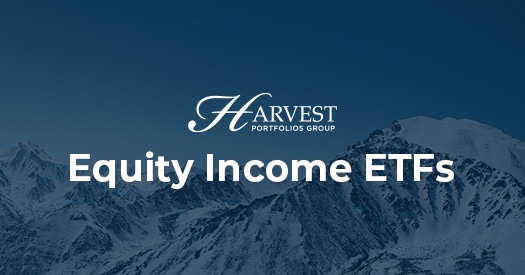Navigating the intricate world of investments requires an understanding of tax efficiency, particularly for income-seeking investors aiming to optimize their returns within non-registered accounts. While high-yield portfolios offer the allure of consistent income, the lurking presence of taxes can swiftly erode gains and derail financial aspirations. This article delves into the realm of tax efficiency and introduces a valuable strategy of Tax-Efficient Equity Income Exchange-Traded Funds (ETFs) bolstered by covered call techniques.
The Taxation Conundrum
The appeal of dividend income and bond interest payments can be overshadowed by the complexities of taxation. These earnings are often subject to taxation as regular income, potentially chipping away at a substantial portion of the returns. Investors holding foreign dividend-paying assets face the additional challenge of higher marginal tax rates.
How Are ETF Distributions Taxed in Canada?
In Canada, the taxation of ETF (Exchange-Traded Fund) distributions depends on the type of income generated by the ETF. There are generally three types of distributions that can occur:
Interest Income: If an ETF holds interest-bearing investments such as bonds, GICs (Guaranteed Investment Certificates), or other fixed-income securities, the interest income generated by these investments is subject to taxation at your marginal tax rate. This type of income is typically taxed higher than other types of investment income.
Dividend Income: Dividends received from Canadian corporations may qualify for the dividend tax credit, which results in lower taxation compared to interest income. There are different types of dividends in Canada, including eligible dividends and non-eligible dividends, each with different tax treatment. Eligible dividends generally receive more favorable tax treatment.
Capital Gains: When an ETF sells securities at a profit, the resulting capital gains are typically taxed at 50% of your marginal tax rate. This means that only half of the capital gains are included in your taxable income. This treatment applies to both realized capital gains (when the ETF sells a security) and unrealized capital gains (when the value of the ETF’s holdings increases but is not sold).
It’s important to note that the specific tax treatment of ETF distributions can vary depending on factors such as the type of investments held by the ETF and your individual tax situation. Additionally, different ETFs may have different distribution structures, which can impact how their distributions are taxed.
Exploring the Potential of Tax-Efficient ETFs
Within this dynamic investment landscape, Tax-Efficient Equity Income ETFs emerge as a beacon of opportunity for income-seeking investors. These specialized ETFs present an effective strategy, particularly when augmented by the use of covered call techniques. At its core, this strategy involves the ETF selling call options on a specific portion of its equity holdings, which generates premium income that is subsequently distributed to investors. For a better understanding of the mechanics behind covered calls, explore our comprehensive guide.
For Canadian investors seeking tax-efficient investment avenues, Equity Income ETFs offer a particularly compelling solution. These ETFs not only capitalize on the potential of covered call strategies, but also work within Canada’s unique tax ecosystem with its emphasis on capital gains. This makes investing in Tax-Efficient Equity Income ETFs a great option for those looking to achieve enhanced after-tax returns.
Customized Strategies Tailored to Unique Goals
The landscape of Equity Income ETFs is not one size fits all. These ETFs come in diverse shades, ranging from those primarily reliant on dividend income to those predominantly leveraging covered call premiums. For example, Harvest Equity Income ETFs integrate covered call techniques to generate a substantial proportion of their income distribution. The process of selecting the optimal ETF revolves around aligning your personal objectives with investment strategies. Beyond tax considerations, factors such as the composition of underlying securities, anticipated yield, and risk profile need to be evaluated.
Bottom Line
Tax efficiency remains an indispensable factor of successful investing, and the potential of Equity Income ETFs is undeniable. These ETFs present a great solution for income-focused investors, offering a means to potentially reduce tax burdens while pursuing a dependable income stream. The synergy between covered call strategies and Canada’s distinctive tax landscape makes these ETFs a compelling consideration for investors who are intent on enhancing investment returns post-taxation.
For more on Harvest Equity Income ETFs click here.












